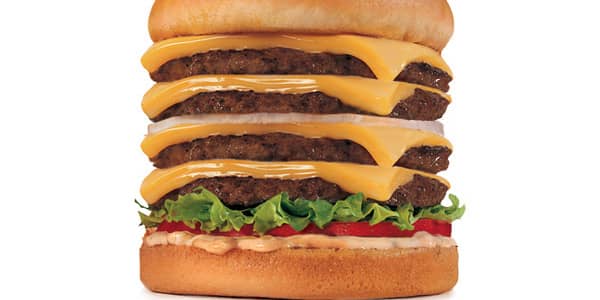The Money Behind Back-to-School
As millions of students head back to school this fall, billions of dollars will be spent both to prepare them for classes and to educate them.
Recently, the U.S. Census Bureau highlighted some major education-related statistics to help people understand the size and scope of the education system in the U.S. With billions of dollars in both consumer and government spending directed towards education each year, the education economy—from kindergarten through graduate school—is a significant, and growing, portion of the country’s economy.
So, what are the big numbers in the education system? Click ahead to find out.
By Paul Toscano
Posted 1 Sept 2011
Back-to-School Spending
Clothing store spending: $7.2 billion
Book store spending: $2.2 billion
One large component of the education economy is back-to-school spending, the majority of which occurs during the month of August. According to the Census Bureau, shoppers spent $7.2 billion at family clothing stores in August 2010. Only spending in November and December ranks higher.
The Census Bureau also found that total sales at book stores in August 2010 totaled $2.2 billion, an amount rivaled in 2010 only by sales in January.
This spending helps support 28,429 family clothing stores, 7,349 children and infant clothing stores, 28,178 shoe stores, 9,373 office supply and stationery stores, 22,116 sporting goods stores, 9,708 book stores, and 8,813 department stores in the U.S., according to a 2008 report from the Census Bureau.
Number of Students in America
Total: 55.5 million
An estimated 55.5 million students will be enrolled in the nation's elementary and secondary schools—pre-kindergarten through 12th grade—this fall, according to the Census Bureau. Of these students, 11 percent, or about 6.1 million, are projected to be enrolled in private schools.
Spending on K-12 Education
Total spending: $661 billion
Spending on both public and private elementary and secondary schools was estimated to be $661 billion in 2009 (the latest year for which such data is available in the Census Bureau's Statistical Abstract). Of that, $611 billion was spent on public schools, while $50 billion was spent on private schools. During this time, there were 98,706 public schools and about 33,740 private schools.
Cost Per Student
Average cost: $10,499
The average per-pupil expenditure for public elementary and secondary education nationally in 2009 was $10,499, according to the most recent numbers from the Census Bureau.
New York spent the most among states or state equivalents at $18,126 per student, followed by the District of Columbia ($16,408), New Jersey ($16,271), and Alaska ($15,552). Utah spent the least per student at $6,356, followed by Idaho ($7,092) and Arizona ($7,813).
National School Lunch Program
Students participating monthly: 31.3 million
The National School Lunch Program is a federally assisted meal program operating in more than 101,000 public and nonprofit private schools and residential child-care institutions. The program provides low-cost or free lunches to children during the school day.
Students living in homes with household incomes at or below $28,665 per year (130 percent of poverty level, family of four) are eligible for free meals, while those with household incomes of $40,793 (185 percent of poverty level, family of four) are eligible for reduced-price meals. As of fiscal year 2009, the program’s operating cost was $9.8 billion.
Teachers in America
There were 7.23 million teachers in the U.S. in 2009, according to the Census Bureau. Elementary and middle school teachers make up the largest group, totaling 2.8 million, while postsecondary teachers are next (1.3 million) and secondary school teachers (1.2 million) are third. According to information from the Bureau of Labor Statistics, about 9.29 million people are currently employed in the U.S. education system, including administrators, research staff, and college professors.
Salaries in Schools
Highest average teacher salary: $65,800
The average annual salary of public school teachers in California was $65,800 as of the 2007-2008 school year, the highest for any state. Conversely, teachers in South Dakota received the lowest pay at $36,700.
High school principals earned $99,365 annually in 2008-09, while bus drivers earned $16.44 per hour, custodians made $14.59 per hour, and cafeteria workers earned $11.94 per hour, according to the Census.
Students in College
There are 19.7 million students projected to be enrolled in the nation's colleges and universities this fall, which is up from 14.4 million 20 years ago. And estimated 14.5 million students are projected to be enrolled in public schools in 2011, while private school enrollment is expected to total 5.2 million students.
By 2015, the overall number is expected to increase to about 21.1 million. In the most recent year available (2009), total college expenditures for both public and private institutions was estimated at $432 billion.
The Value of Higher Education
On average, the less education an individual has, the lower average income they can expect. So, exactly how valuable is a college or graduate degree?
According to the Census Bureau, for U.S. workers with a post-graduate degree, average annual earnings stood at $83,144 as of 2008. Average annual income for individuals with a bachelor's degree was $58,613, while individuals with a high school diploma can expect to earn an average of $31,283 each year. For those without a high school diploma, average annual salaries were $21,023, according to the Census Bureau.
Salary by College Degree
Although a bachelor’s degree will increase your chances of drawing a higher salary, not all degrees are created equal. The perennial highest-paid degree is petroleum engineering, with average annual income of $80,849 in 2011, according to NABE, followed by chemical engineering ($65,618), computer engineering ($64,499), and mining/mineral engineering ($63,969).
On the other end of the spectrum, students majoring in social science are at the bottom of the list, with an average salary of $36,217, according to the Census Bureau.




